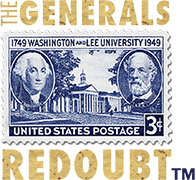Ideological Intensification: A Quantitative Study of Diversity, Equity, and Inclusion in STEM Subjects at American Universities
By Mason Goad and Bruce R. Chartwell

The National Association of Scholars has been following the rise of diversity, equity, and inclusion (DEI) ideology for decades. Nearly twenty years ago, in his 2003 book Diversity: The Invention of a Concept, NAS President Peter Wood traced the evolution of “diversity” and outlined how the academic concept is at odds with America’s ideals of liberty and equality. More recently, in 2019, NAS Director of Research David Randall conducted a comprehensive study of the DEI-laden coursework at sixty universities. Earlier this year, NAS Research Fellow John Sailer built on Randall’s work by taking a deep dive into the way that administrators at the University of Tennessee used the university bureaucracy to entrench DEI on campus.
Last week, NAS published its latest study on DEI, which focuses on the ideology’s alarming advance into science, technology, engineering, and mathematics (STEM). The report, titled Ideological Intensification, is the largest quantitative study of DEI in STEM to date. Its rigorous quantitative approach complements NAS’s conceptual and case-study analyses of the DEI regime, while offering crucial insight into how the ideology undermines scientific discovery.
To track the rise of DEI in STEM, report author Mason Goad (with the assistance of a data scientist who remains pseudonymous for security reasons) assembled five datasets with over 30 GB of data from “university webpages, university Twitter accounts, annual programs of academic associations, grants of major scientific research funders, and publications of scientific research.” An analysis of the data revealed that “DEI-related language has increased significantly in all STEM sectors over the last decade, and exponentially so within the last few years.” The report abstract summarizes the findings:
These findings provide cold, hard facts to back up the concerns that advocates of intellectual freedom have voiced for years. DEI ideology is not a bogeyman; it is a rapidly spreading contagion that runs straight through the heart of scientific discovery and the pursuit of truth. The full consequences of this DEI takeover remain to be seen, but what has unfolded thus far has not been pretty. The report concludes:
The activists’ aim is to radically transform the sciences by making all aspects of scientists’ careers conform to the demands of DEI ideology. Training and education in the sciences, hiring of new science educators and researchers, decisions on research grants, accreditation, governance of research universities, and more are now being reshaped to meet the demands of DEI ideology. The ideological intensification over the past few years is now empirically evident. Only the future remains unknown. Yet if the ideology continues to intensify and be institutionalized, then the future of STEM, along with the rest of the academy, is almost certainly imperiled.
America’s academic atmosphere is stifling due to its rigid conformity to an ideological agenda that is enforced from all sides. Though formerly characterized by an ethos of discovery, STEM has succumbed to this same totalizing force.
DEI indicators linked with STEM have risen 2,600 percent compared to a decade ago on university websites, with similar trends observed in social media content. This increase has been catalyzed, in part, by significant increases in government spending. The two principal funders of scientific research, the National Institutes of Health (NIH) and the National Science Foundation (NSF), increased DEI-related research spending by roughly 300 percent in one year alone (2020–2021). This increase is also visible in scientific publications, with DEI-related language rising up to 4,200 percent between 2010 and 2021.
Nonetheless, a remnant of scientists committed to the pursuit of truth remains, and the future of American innovation depends on their continued resistance. Ideological Intensification provides vital support to these faithful few. I encourage you to read it carefully and distribute it widely.
Until next week.
Marina Ziemnick
Communications Associate
National Association of Scholars
